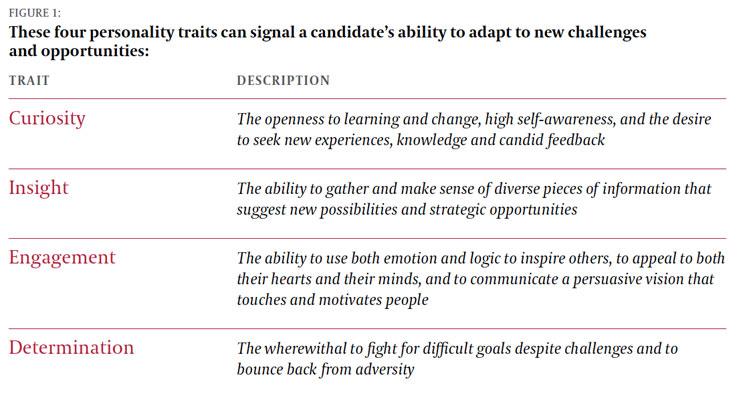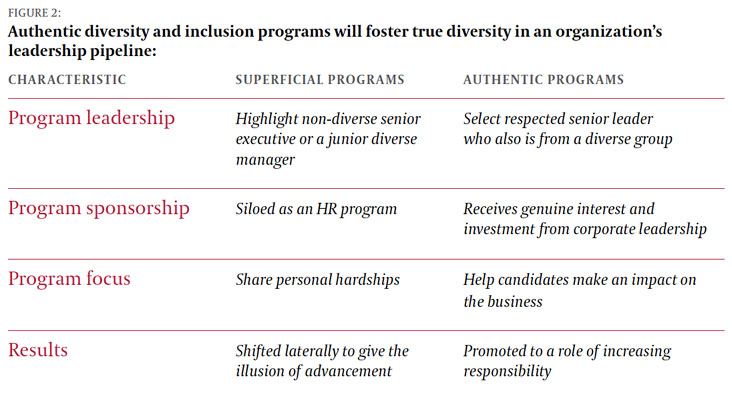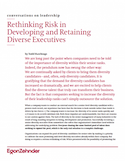We are long past the point when companies need to be reminded of the importance of diversity within their senior ranks. Indeed, the pendulum now has swung the other way: We are continually asked by clients to bring them diversity candidates—and, often, only diversity candidates. It is gratifying that the demand for diversity candidates has increased so dramatically, and we are excited to help clients find the diverse talent that truly can transform their business. But the fact is that companies seeking to increase the diversity of their leadership ranks can’t simply outsource the solution.
When a company wants to conduct an external search for a senior-level diversity candidate with a proven track record, our experience has been that the decision to look outside rather than inside is driven by two forces: 1) The company wants to increase the diversity of its senior ranks quickly and 2) It wants to do so with minimum risk. Both of these impulses are understandable, but there are reasons to use caution with them. The lack of diversity in the senior management of many industries is the result of long-standing inequities in hiring, development and promotion. Successfully recruiting a senior diversity executive from somewhere else solves that organization’s immediate need without addressing the underlying problem: Everyone chasing the same limited pool of talent does nothing toexpand the pool, which is the only real solution to a complex challenge.
Organizations can expand the pool of diversity candidates for senior roles by making it a priority to cultivate the most promising mid-level diversity executives already within their company. But doing so requires a serious rethinking of risk. When presented with the possibility of promoting the current (diverse) controller into the CFO role, for example, many organizations will focus on the risk of underperformance and turn to recruiting an established (and, many times, non-diverse) CFO from the outside. But what organizations frequently don’t realize is by avoiding one risk at all costs, they actually are incurring the much more significant risk of having great talent recruited away from them. From our vantage point in the middle of the talent market, we have seen this happen far too often.
De-risking stretch promotions
If organizations can get a more accurate reading of the risk involved in a stretch promotion, they may find that it isn’t as risky as it seems. They can do this by looking past the traditional competencies like strategic orientation and ability to influence in their evaluations. Our research into many such cases has shown that candidates with some or all of four key personal attributes—curiosity, insight, engagement and determination—have the agility and temperament needed to adapt to the changing conditions and unforeseen challenges that stretch promotions commonly bring (see Figure 1). Indeed, such candidates can end up outperforming others who lack those personality traits but check all the traditional boxes.

A more accurate assessment of an internal candidate’s potential to grow into a new role is a powerful way of mitigating the risk that comes with stretch promotions and, thus, increasing the flow of diversity candidates into the upper tiers of leadership. But this is not the only risk that must be considered in order to expand diversity. Just as organizations may have to make an educated leap of faith when moving a mid-level diverse executive up to a senior position, so, too, are those executives weighing the risk of assuming that if they reject an offer to go elsewhere, their potential will be recognized and translated into opportunity where they are.
A hard look inward
Minimizing the risk borne by diverse executives requires organizations to take a close look at their culture and support mechanisms to evaluate whether their commitment to diversity is strong, consistent, effective, and free from unconscious bias and other forces that might undermine it. Companies that tend to recruit diverse leadership from the outside rather than cultivating it from within can easily skip over this important self-evaluation and end up with a more anemic diversity environment than they realize.
Ask the following: Do the diversity executives in the organization feel they have equal access to both formal training and informal mentoring? Is the composition of the senior-most ranks of the organization such that a diverse executive feels that ascending to that level is a realistic possibility? Does the organization have a track record of developing and promoting diverse leaders from within? Is the promotion process transparent and accessible?
Pay particular attention to diversity and inclusion programs. These programs can be highly effective if they reflect an authentic commitment to promoting internal diverse talent to senior leadership positions but can exacerbate tensions and dissatisfaction for diverse talent if such programs exist merely for optics (see Figure 2).

It isn’t only diverse executives who closely examine the inclusiveness of a company’s culture. We once regretfully turned down an assignment from a Fortune 100 company to recruit a top-level female executive to the leadership of the company’s services division. A careful reading of the role specification against the talent marketplace quickly showed that there were only a half dozen women from other companies who could step into this specialized position—and each of those women was at a company that was more genuinely diverse and inclusive than our potential client. As a result, we knew it would be virtually impossible, no matter what salary and perks were offered, to successfully recruit one of these women to this new opportunity. Enterprises such as this can increase the diversity of their senior leadership—but only by taking a long-term view centered on leveraging their internal pool of diverse executives.
Ultimately, this example is only an extreme case that highlights a broader truth: For diversity and inclusion to reach meaningful levels, organizations must move beyond the relatively “quick win” provided by external recruiting and, instead, focus on assessing, developing and retaining the diversity talent they already have. Doing this effectively will naturally grow the number of diverse executives in the candidate pool for senior positions, which, in turn, will increase the diversity of an organization’s senior leadership in an authentic way. That is the surest path for a company to be known as an employer of choice for talented diversity candidates—no matter whether they come from within the company or from without.






